Want to know about the hybrid work model?
Since the COVID 19 pandemic, employees have become accustomed to the flexibility that comes from working remotely.
Remote work may be part of the new normal, but it might not have long-term feasibility for some companies.
However, a hybrid work model could be the solution. It’ll help you balance employees’ desire to work remotely with the company’s need for in-house employees.
But will it work for your organization?
In this article, we’ll explain the benefits, as well as the challenges presented by a hybrid work model. We’ll also discuss strategies and highlight the best tools for hybrid work.
This article contains:
(Click on the links below to go to a specific section)
- What is a Hybrid Work Model?
- 3 Benefits of a Hybrid Working Model
- 3 Challenges of Hybrid Work
- 5 Strategies for a Successful Hybrid Work Model
- Top 4 Tools for Hybrid Work
Let’s get started.
What is a hybrid work model?
Hybrid work refers to a mix of remote work and office work arrangements. It’s also known as a hybrid remote working model.
There are two types of hybrid work models:
1. Some employees work remotely while others work on-premises
With this hybrid remote work model, those employees who can carry out their key functions remotely are allowed to do so full-time.
While those employees whose job requires them to be onsite come into the office.
For example, system engineers may need to work at the office every day because they don’t have the infrastructure at home to maintain the company server.
On the other hand, human resources professionals with a computer, internet connection, and the right tools can perform their tasks from home.
2. All employees work both on company premises and remotely
A hybrid working model may also refer to more flexible work arrangements. Some companies may allow employees to spend part of their time at the office and the rest working remotely.
This hybrid workplace model gives employees more freedom — for example, permitting employees to work remotely four days a week and only come to the physical workspace once a week.
3 benefits of a hybrid working model
While some companies have adopted a hybrid work model out of necessity due to the COVID-19 lockdown, there are other benefits:
1. Cost efficiency
With the reduction in the number of employees at the office, employers need less office space. A hybrid model leads to cost savings on rentals, office supplies, and consumables.
Employees spend less time and money commuting. Remote team members don’t need to live near the office, so they could save up on high accommodation costs.
Additionally, working parents could also save on childcare costs since they’ll be able to work from home.
2. Employee health and safety
By reducing the number of people in your office, you can ensure social distancing, which is essential for avoiding the spread of Coronavirus.
Employees who work from home can avoid traveling on public transport where they may be at risk of infection.
Allowing employees to work from home positively impacts their mental health and wellness because it gives them a better work-life balance.
3. Positive environmental impact
Having fewer employees come into the traditional office means you save up on consumables like paper, electricity, etc.
It also reduces carbon emissions which can positively impact the environment because fewer employees are traveling to work.

3 challenges of hybrid work
Here are some of the challenges that you might face in a hybrid workplace:
1. Division among the team
Remote employees can often feel left out — especially when vital information regarding projects, company policies, etc., is shared with the office workers first.
This happens when managers come into the physical office, make important decisions and share information with team members. Remote employees are usually the last to find out, which leads to a division between the remote and in-house teams.
Another possible source of division for a hybrid company is team meetings.
When in-house employees are in a conference room, and their remote colleagues attend a meeting virtually, remote employees may feel like observers rather than participants.
Additionally, onsite employees sometimes feel like their remote colleagues are not working as hard as they’re because they can’t see them working in real-time.
2. Data security
If you have employees remotely accessing your company’s data, it can put your network at risk.
A solution may be to create a local database and ask your entire team to access it. This gives you control over your database, including backups, software protection, etc.
You could consider adopting software to monitor remote worker compliance with company security protocols.
3. Concerns about productivity
Another concern associated with a hybrid team is productivity management.
How do you measure productivity when half of your team is in the office and the rest work from home?
All employees need to be productive and contribute to the company’s goals and targets fairly.
To monitor this, you’ll need to track their performance and their billable hours.
5 simple strategies for a successful hybrid work model
Each company will have challenges when it comes to implementing a hybrid remote work model. However, there are ways to make the transition easier.
Here are some strategies that we’ve found effective:
1. Create policies that benefit all employees
The first step should be to create policies and procedures that benefit all employees.
Some policies you could establish are:
- Absenteeism policy: Highlights the importance of attendance for all employees.
- Employee monitoring policy: Ensures employees are aware of what you’re monitoring and addresses any privacy concerns.
- Flexible work policy: Highlights what employees may and may not do under flexible working arrangements.
Additionally, employees that come into the office shouldn’t be privy to more information than those working in different locations.
Moreover, ensure you record all your company policies and procedures in an employee handbook and that all employees can easily access it.
2. Equip employees with adequate resources and online solutions
Treating in-house and remote employees equally means providing them with the same tools and online solutions.
For example, adopting an online project management system like Monday.com enables employees to stay in the loop on company projects, news, etc. It’ll also help your whole team collaborate easily, even if they’re working from different locations.
3. Communicate in a way that suits everyone
While you should prioritize communication in every work environment, it’s even more crucial when half your team works off-site.
Here are few things to remember:
A) Ensure all employees communicate with each other online
Since some employees can’t communicate face-to-face, you can use Slack or a similar tool to create a virtual community. This bridges the communication gap between your in-house and remote workers.
Employees can check-in when they begin their shift and collaborate throughout the workday. It also helps you build an inclusive company culture.
B) Reconsider how you conduct meetings
If you have a team of in-house and remote employees, avoid holding meetings in a physical meeting room. Instead, conduct a virtual meeting where all employees join from their computers (even when they’re at the office.)
C) Create a virtual watercooler atmosphere to boost employee engagement
By allowing employees to bond over informal conversations, you can build social capital within your organisation, which will improve teamwork and productivity.
You could also host virtual happy hours and mixers where employees can get to know each other better.
4. Give your employees the same perks
Provide your hybrid workforce with the same perks no matter where they work.
For example, if your company gives its employees time off on their birthday, do this for your in-house and remote team.
Or, if you provide catered lunches or free snacks during staff meetings, send these to your remote employees as well.
5. Ensure data security
Having the right policies and software solutions can significantly reduce the likelihood of a data breach or cybersecurity incident.
Here’s what you should remember:
- Ensure high password standards to minimize the risk of hackers attacking your network.
- Implement multi-factor authentication on all accounts.
- Equip office-based and remote employees with digital tools like Teramind that can alert them to potential security threats.
Top 4 tools for hybrid work
Here are a few excellent solutions for ensuring the success of your hybrid company:
1. Time Doctor for performance management
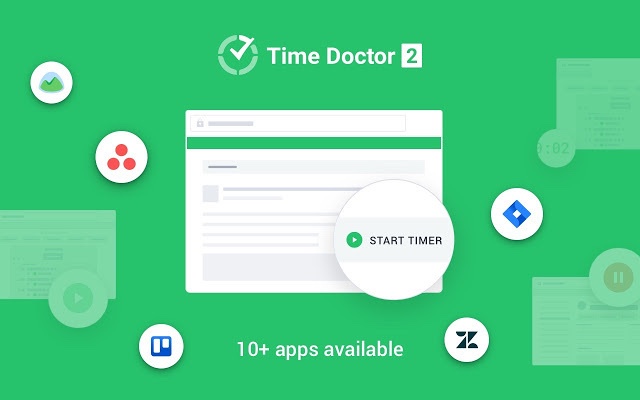
Time Doctor is a powerful time and performance management tool used by startups and larger organizations to boost overall productivity.
It can help you track billable hours and monitor how productive your team is, whether they’re in the office or working remotely.
A) Key features
Here are some of Time Doctor’s key features:
1) Time and activity tracking
Since part of your hybrid team won’t be physically clocking in at a traditional workplace, you’ll need another way to track their hours.
Time Doctor is the ideal solution for hybrid working models – it lets you track time manually and automatically, down to the second.
Here’s how you can track time manually:
- Open Time Doctor.
- Enter the task name you want to work on.
- Click “Start” to begin recording time.
- Click “Stop” to stop recording.
Time Doctor will track the hours worked by each team member.
It also tracks time worked on specific projects and tasks overall and the time spent on tasks and projects by each employee.
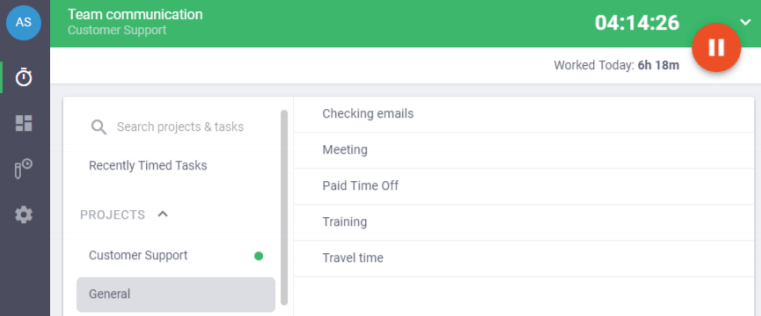
You can also opt for the automatic mode, which allows you to track time the moment you switch on your PC.
2) Detailed reports
Your remote and in-house team can manage their own time more effectively by tracking their productivity in real-time through Time Doctor’s dashboard.
Here are some of the comprehensive reports available:
- Activity summary: Shows the active minutes and seconds, unproductive, manual, and mobile time for each remote or office employee for a selected period.
- Hours tracked: Reveals how many hours your team tracked weekly or for a specified date range.
- Projects & tasks: Reveals the number of hours spent on projects and individual tasks.
- Timeline: Reveals how many hours employees spend on tasks and breaks daily or weekly.
- Web & app usage: Indicates the amount of time spent on various sites and applications.
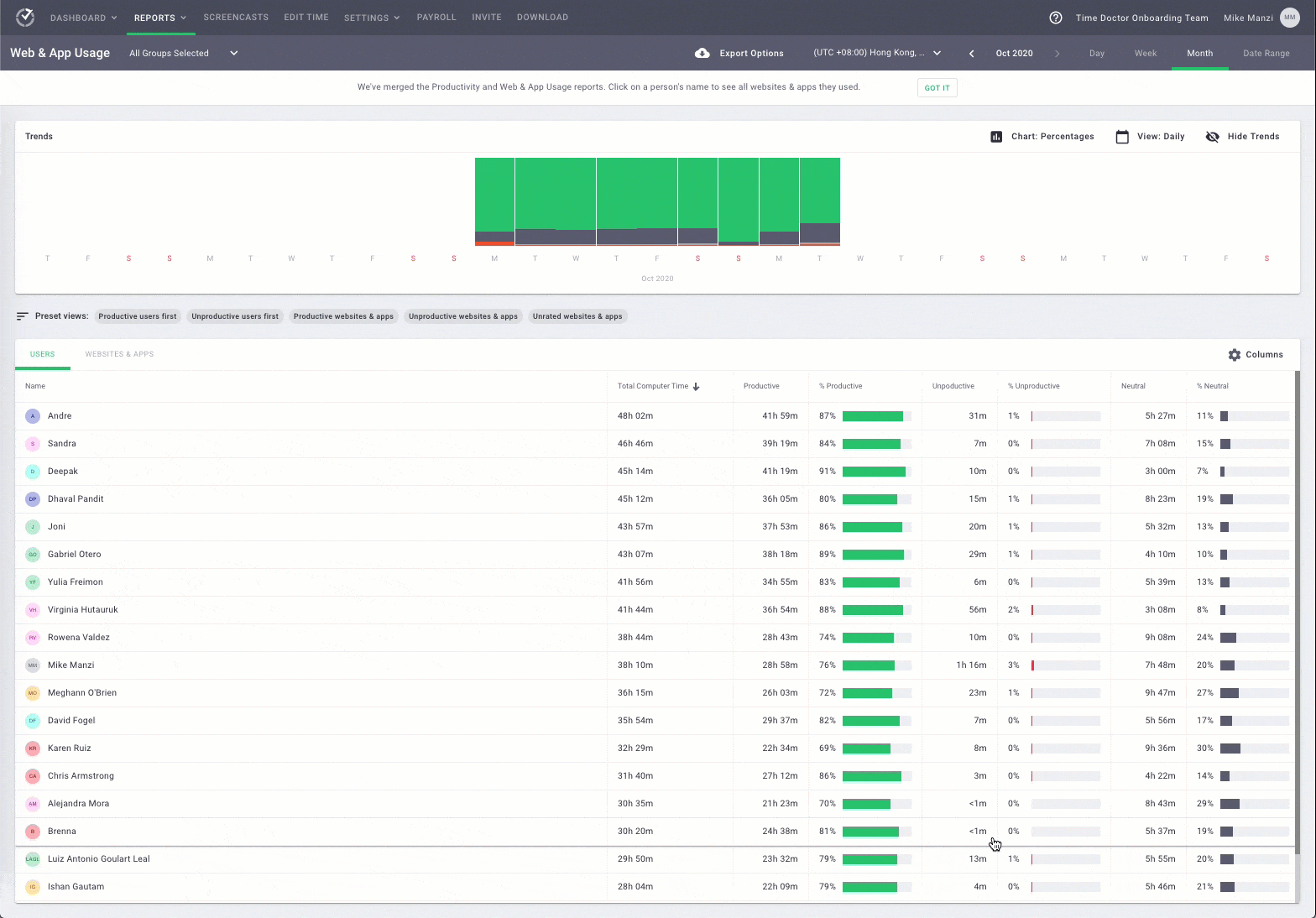
3) Productivity ratings
With the Productivity Ratings feature, you can categorize the URLs visited by your team.
This way, you can ensure employees aren’t wasting time on unproductive sites during working hours, even if they aren’t right in front of you.
Managers can determine which websites and apps are productive and which are unproductive.
They can select one of these four ratings:
- Neutral
- Unrated
- Productive
- Unproductive
Time Doctor uses your selected ratings to generate accurate productivity reports.
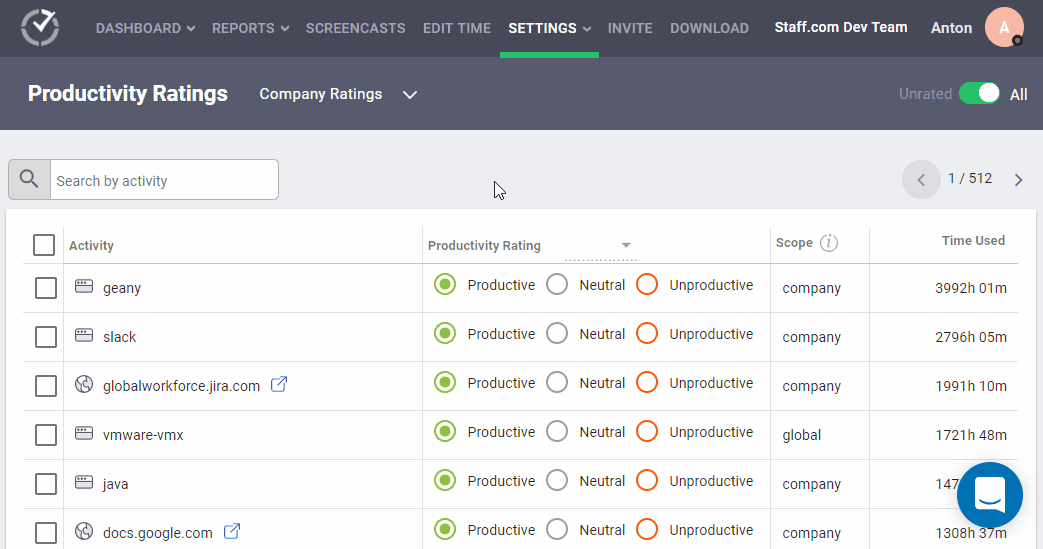
4) Screencasts
Time Doctor’s Screencasts function reveals what your team is doing at work, even if they aren’t in a physical office.
It takes screenshots or video recordings of employees’ computer screens during tracked hours.
With this feature, you can:
- Download screencast images and videos.
- Delete or blur screencasts with sensitive information.
- View screencasts where there was no/low keyboard or mouse activity.
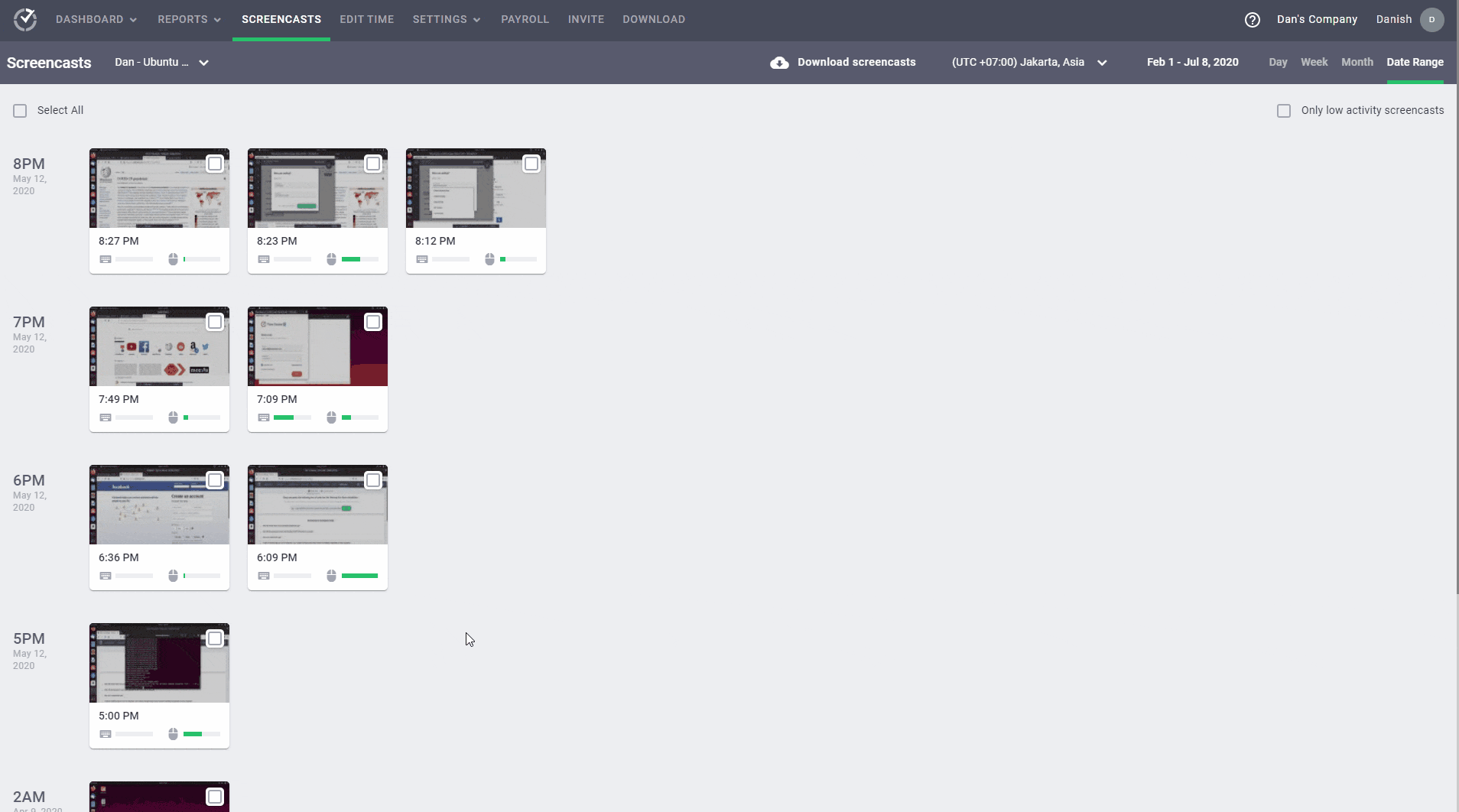
Note: Time Doctor doesn’t track the keys pressed by users, which could invade their privacy. Instead, it monitors whether any keys were pressed or not.
5) Payroll
An employer can enable Time Doctor’s Payroll feature to directly pay their team’s salaries through their preferred payment gateway.
With this feature, you can:
- Customize pay periods and currencies for convenience.
- Approve employee timesheets manually or automatically.
- Configure payroll for hourly or salaried employees.
- Make quick payments with integration to Gusto, PayPal, Wise, etc.
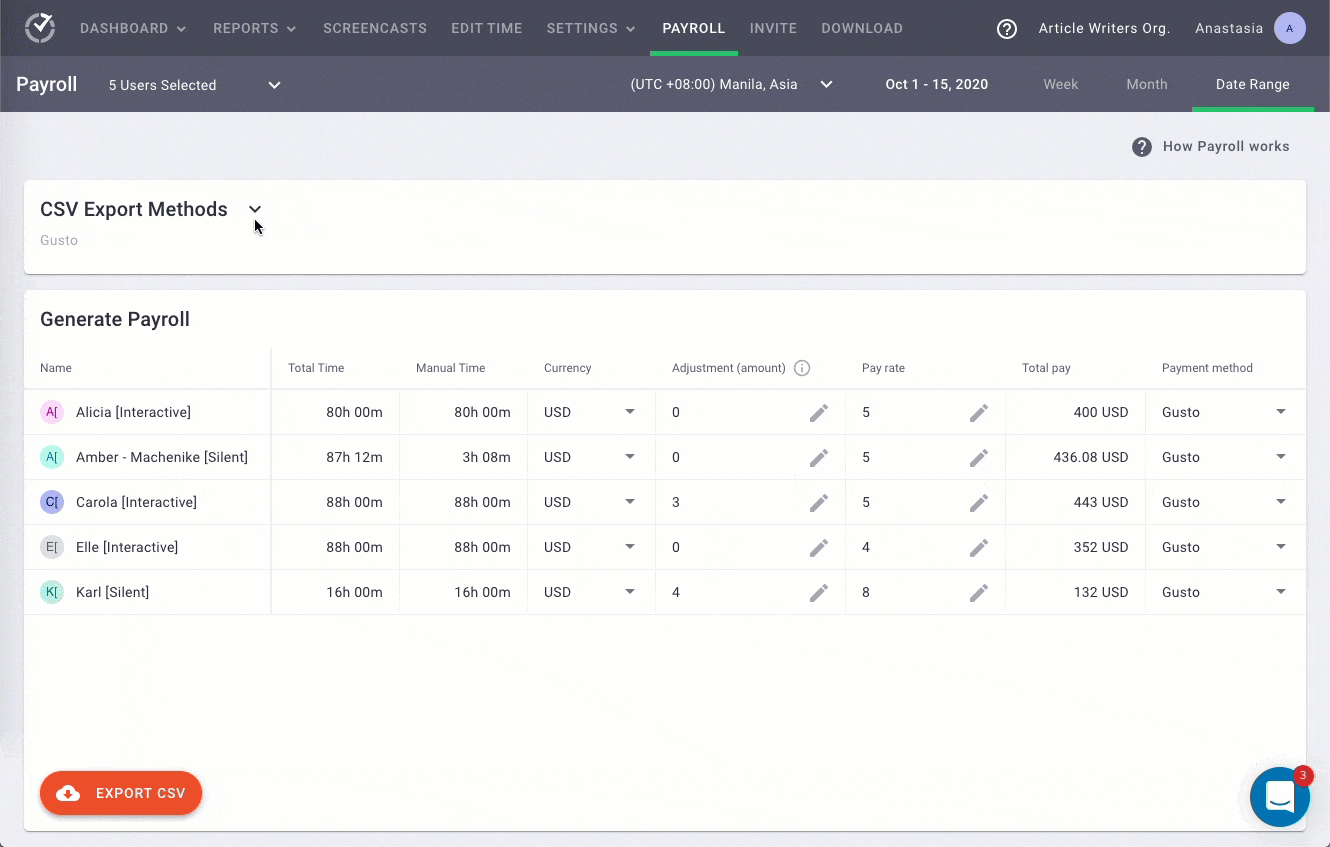
B) Pros
- Flexible time tracking — manually or automatically.
- Create and assign projects and tasks to employees.
- Straightforward and employee-friendly settings.
- Time tracking directly from other apps through a powerful Chrome extension.
- Track time from anywhere with the Android mobile app.
- Integration with 50+ third-party apps like Asana, Trello, and Basecamp.
- Strict privacy and data security policies.
- Platform compatibility with Windows, Mac, Linux, and Android operating systems.
C) Pricing
Time Doctor’s paid plans begin at $7/user per month. You can sign up for the 14-day free trial without a credit card.
D) Customer ratings
- G2: 4.4/5 (170+ reviews)
- Capterra: 4.5/5 (320+ reviews)
2. Microsoft Teams for communication
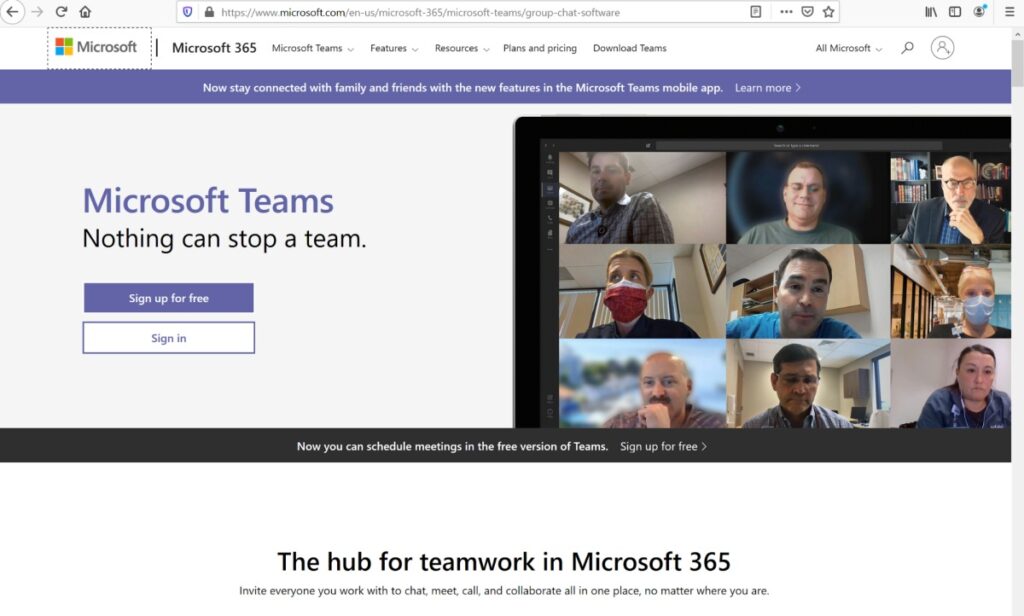
Microsoft Teams lets you communicate with everyone on your team through instant messaging, video conferencing, and one-on-one video calls.
You can also have multiple team members collaborate on documents.
A) Key features
- Chat with a co-worker or the entire team in real-time.
- Make, receive and transfer calls.
- Find, share, and edit files in real-time using apps you may already use like Word, PowerPoint, and Excel.
B) Pricing
Microsoft Teams’ paid plans start at $6/user per month. It also has a free limited plan.
C) Customer ratings
- G2: 4.2/5 (9200+ reviews)
- Capterra: 4.4/5 (3800+ reviews)
3. ClickUp for project management
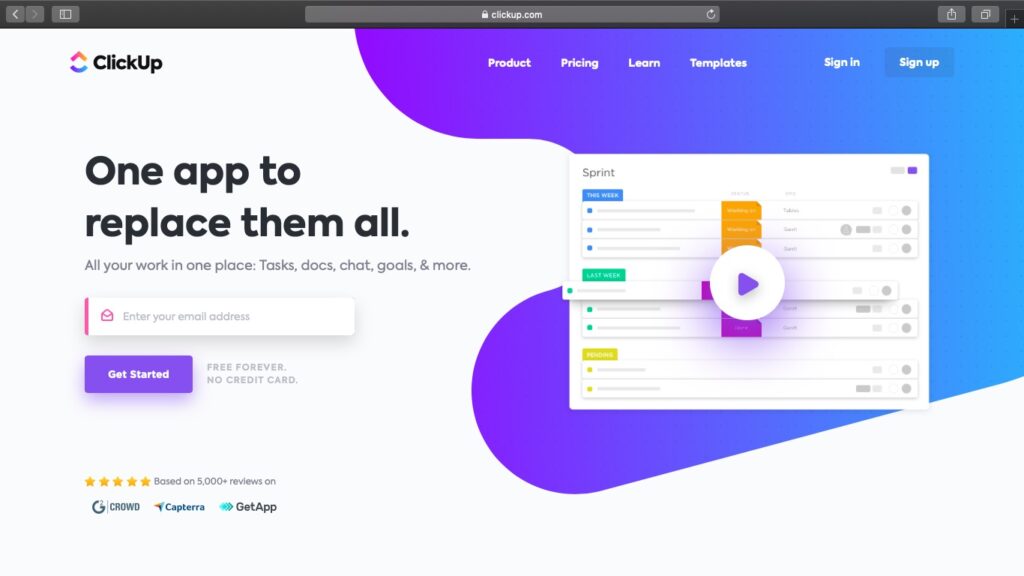
ClickUp is a feature-rich project management tool that lets you collaborate on projects and tasks, even if your team isn’t in the typical office environment.
With this tool, your team can see what projects are due, track timelines, and collaborate with remote and in-office colleagues.
A) Key features
- Organize workflow with customized statuses.
- Quickly create reusable checklists for tasks.
- Assign tasks to an employee or team.
- Sync ClickUp tasks with your Google Calendar.
B) Pricing
ClickUp’s paid plans begin at $9/user per month.
C) Customer ratings
- G2: 4.7/5 (2,400+ reviews)
- Capterra: 4.7/5 (2,100+ reviews)
4. Cloudflare for data security
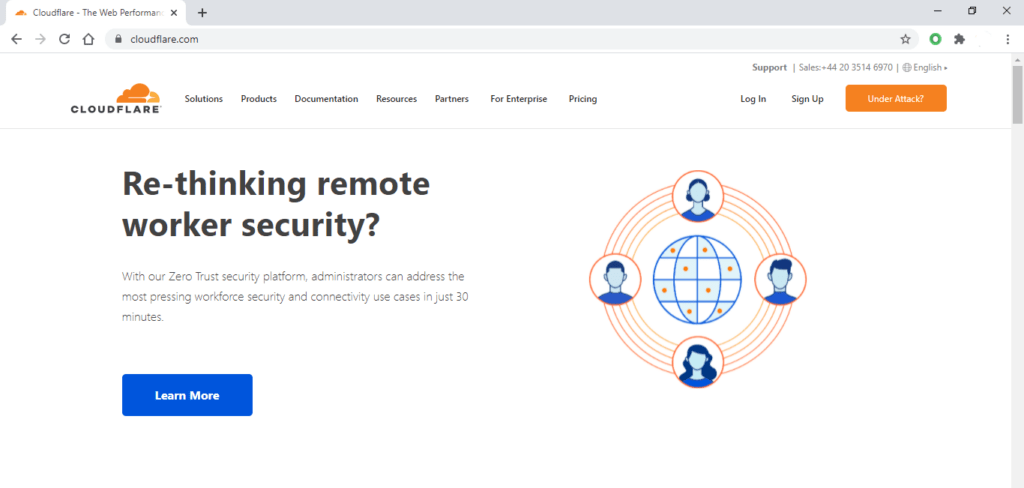
Cloudflare is software that protects your website, apps, and internal network from security threats.
The software runs silently in the background, keeping the websites and services your team depends on up and running.
A) Key features
- Protects your network from malicious bots, hackers, crawlers, and other attacks.
- Logs every access request made to a resource in your network, so you know what each worker is accessing.
- Ensures team members in other cities and regions remain compliant with data security, privacy, and regulatory requirements.
- Improves your site’s performance and speeds up loading times through multiple data centers located around the world.
B) Pricing
Cloudflare’s paid plans begin at $20/domain per month.
C) Customer ratings
- G2: 4.6/5 (200+ reviews)
- Capterra: 4.8/5 (200+ reviews)
Final thoughts
Hybrid workforce models may be the future of work.
It can help your business run more efficiently while your employees can achieve a better work-life balance.
Begin by establishing company policies and practices that treat all employees equally. Then, provide them with the right tools to succeed whether they work remotely or in-office.
Once you do, your processes will run more smoothly, employees will be more productive, and your business will flourish!

Andy is a technology & marketing leader who has delivered award-winning and world-first experiences.


